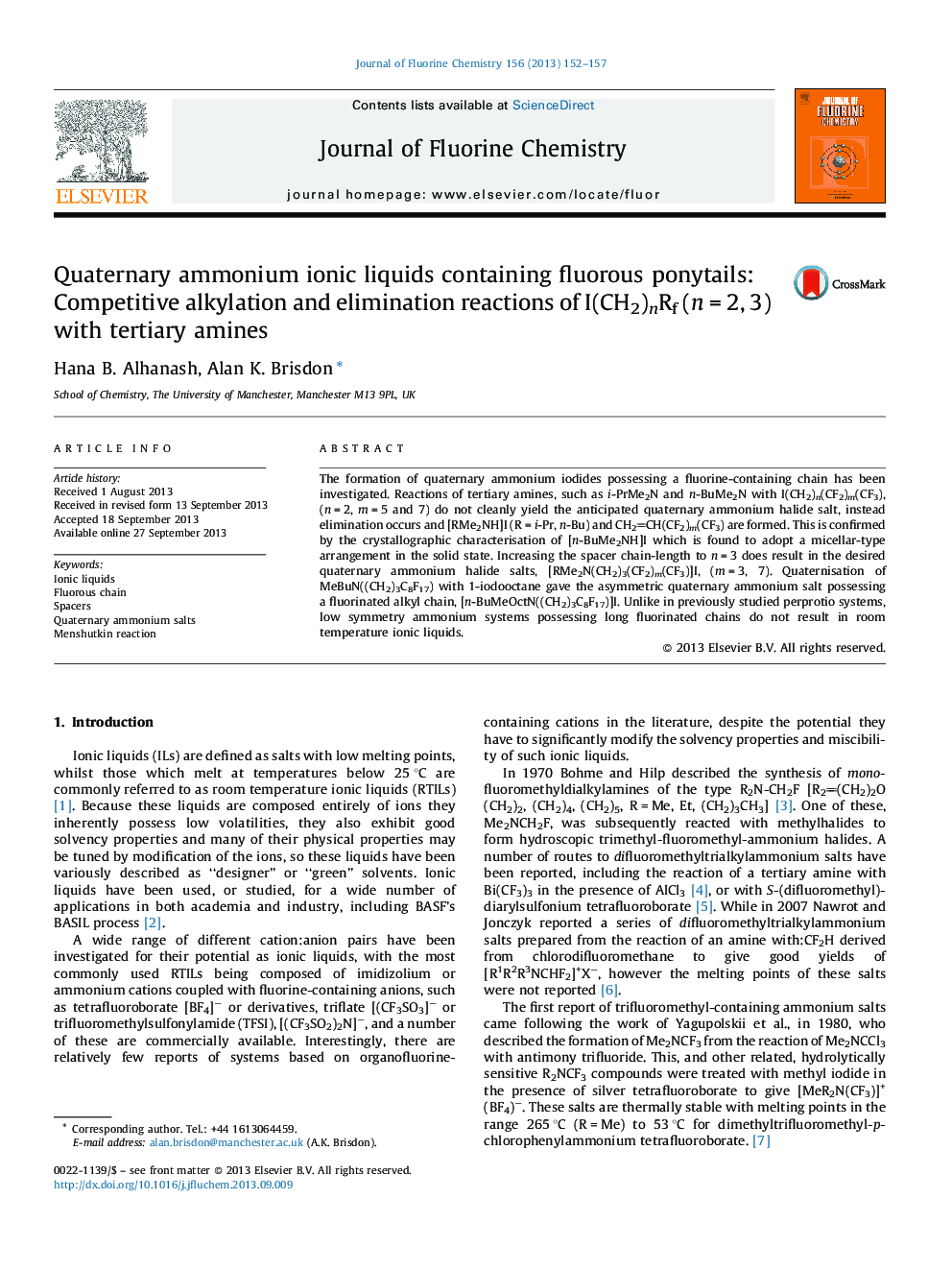| Article ID | Journal | Published Year | Pages | File Type |
|---|---|---|---|---|
| 1313856 | Journal of Fluorine Chemistry | 2013 | 6 Pages |
•We report the reaction of tertiary amines with I(CH2)n(CF2)mCF3 compounds.•When n = 2 elimination occurs to give CH2CH(CF2)mCF3.•When n = 3 quaternisation results to give quaternary ammonium salts.•The completely asymmetric fluoroalkyl-containing quaternary ammonium salt BuMeOctN((CH2)3C8F17)]I is reported.
The formation of quaternary ammonium iodides possessing a fluorine-containing chain has been investigated. Reactions of tertiary amines, such as i-PrMe2N and n-BuMe2N with I(CH2)n(CF2)m(CF3), (n = 2, m = 5 and 7) do not cleanly yield the anticipated quaternary ammonium halide salt, instead elimination occurs and [RMe2NH]I (R = i-Pr, n-Bu) and CH2CH(CF2)m(CF3) are formed. This is confirmed by the crystallographic characterisation of [n-BuMe2NH]I which is found to adopt a micellar-type arrangement in the solid state. Increasing the spacer chain-length to n = 3 does result in the desired quaternary ammonium halide salts, [RMe2N(CH2)3(CF2)m(CF3)]I, (m = 3, 7). Quaternisation of MeBuN((CH2)3C8F17) with 1-iodooctane gave the asymmetric quaternary ammonium salt possessing a fluorinated alkyl chain, [n-BuMeOctN((CH2)3C8F17)]I. Unlike in previously studied perprotio systems, low symmetry ammonium systems possessing long fluorinated chains do not result in room temperature ionic liquids.
Graphical abstractA series of fluoroalkyl-containing quaternary ammonium ionic liquids are reported, including the completely asymmetric salt [BuMeOctN((CH2)3C8F17)]I, prepared by quaternisation of BuMeN(CH2)3C8F17 with octyliodide. Quaternisations involving Rf(CH2)nI n = 3 proceed smoothly, while those of related systems when n = 2 result in elimination, rather than quaternisation, reactions.Figure optionsDownload full-size imageDownload as PowerPoint slide
